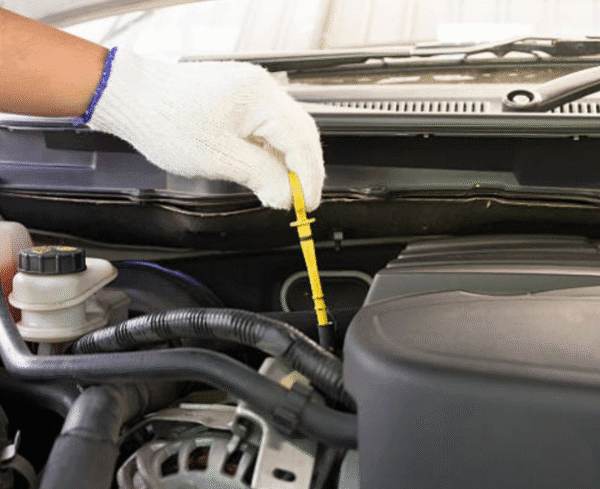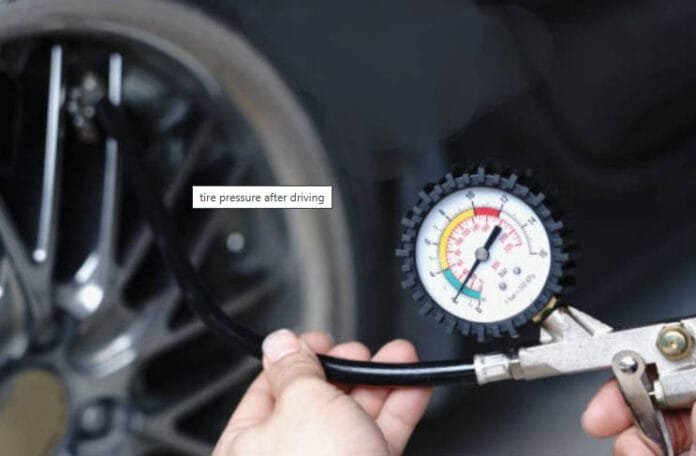If you’re checking your engine oil, you usually wait for the engine to cool down. But when it comes to automatic transmission fluid (ATF), the rules are a little different.
So, do you check transmission fluid while the car is running?
In most cases, the answer is yes. Here’s why—and how to do it properly.

Why You Should Check Transmission Fluid While the Engine Is Running
Transmission fluid expands significantly when it gets hot. That’s why you need to check it when the car is warmed up and running. When the engine is off and the fluid is cold, it’s thicker and hasn’t fully circulated through the transmission system. This can give you a false low reading.
When your vehicle is running at normal operating temperature, the fluid becomes thinner, circulates fully (especially through the torque converter), and gives a much more accurate measurement.
If you check fluid when the car is off and cold, there’s a risk of overfilling the system—because once it heats up, that extra fluid can cause pressure buildup or even damage.
Exception: Honda Accord and Certain Models
While most cars require you to check ATF with the engine running, some Hondas—including the Accord—are an exception.
Honda recommends checking the transmission fluid with the engine off, but only after the fluid has been warmed up. So even in this case, you’ll need to drive the car for a few minutes before turning it off and measuring the level.
Always refer to your owner’s manual, as the proper method may vary depending on your vehicle’s make and transmission type.
How to Check Transmission Fluid Correctly (Step-by-Step)
Here’s the right way to check your transmission fluid—especially for automatic transmissions:
✅ Step 1: Park on Level Ground
Stop your car on a flat, level surface. Shift to Park (P) for automatic vehicles or Neutral (N) if specified in your owner’s manual. Apply the handbrake.
✅ Step 2: Warm Up the Engine
Start the engine and let it idle for around 10 minutes, allowing the transmission fluid to reach operating temperature.
✅ Step 3: Locate the Transmission Dipstick
Pop the hood and find the transmission dipstick.
-
For rear-wheel drive vehicles, it’s usually toward the back of the engine bay.
-
For front-wheel drive cars, it’s often toward the front, near the engine oil dipstick.
Refer to your vehicle manual if you’re unsure—some newer models may not have a dipstick and require a shop visit to check ATF levels.
✅ Step 4: Check the Fluid Level
Pull the dipstick out, wipe it clean with a lint-free cloth, then insert it fully back in. Pull it out again and look at the level:
-
Most dipsticks have markings like “COLD” and “HOT” or MIN/MAX.
-
The fluid should fall between those marks, preferably closer to the “HOT” line when the engine is warm.
🔧 If fluid is below the lower line: Add fluid gradually.
🔧 If fluid is above the upper line: You may need to drain some out.
✅ Step 5: Check the Fluid Condition
Transmission fluid color can indicate its condition:
-
Healthy fluid is usually red, pink, or light brown.
-
If it’s dark brown, milky, or smells burnt, it’s time for a change.
When Should You Check or Change Transmission Fluid?
Many automakers recommend changing automatic transmission fluid between 80,000 km and 160,000 km (50,000–100,000 miles). Some high-end models (like certain Fords) claim up to 240,000 km, but this assumes ideal conditions.
Recommended service intervals:
-
Automatic transmission: Change every 80,000–100,000 km
-
Manual or CVT transmissions: Change every 40,000 km
Always follow the maintenance schedule in your vehicle’s service manual for best results.
Key Takeaways
-
✅ Yes, transmission fluid is typically checked while the engine is running and warm.
-
🔧 Exceptions exist, like some Honda models that require a warm engine but turned off.
-
🛠️ Use the correct procedure and check regularly to avoid costly transmission damage.
-
💡 Don’t forget to check the color and smell of the fluid—not just the level.




